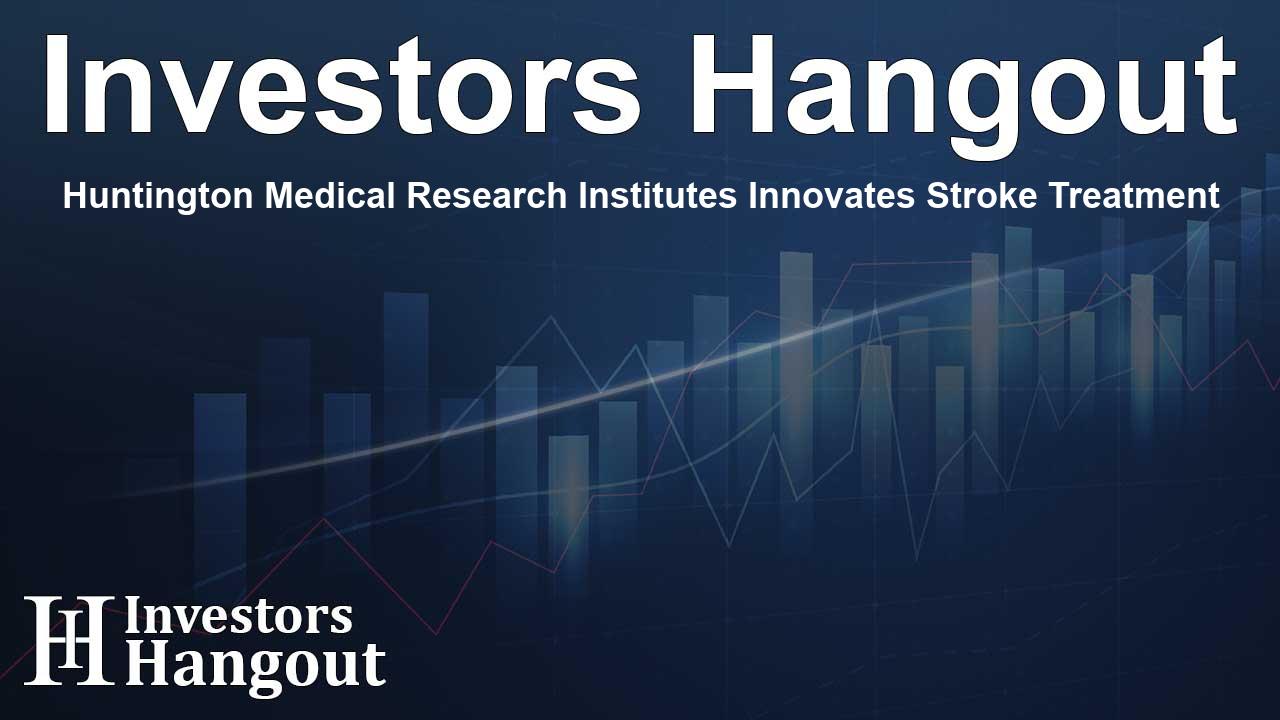Huntington Medical Research Institutes Innovates Stroke Treatment

Significant Advances in Stroke Treatment Research
Huntington Medical Research Institutes (HMRI) has showcased remarkable breakthroughs in the treatment of stroke at a prestigious scientific gathering, setting the stage for innovative approaches in stroke management. Led by renowned experts, the team has investigated the effectiveness of empagliflozin, a widely known antidiabetic medication, in reducing stroke size and severity.
Understanding the Impact of Strokes
Strokes have surged in incidence, prompting concerns over public health. Evidence indicates a 70% increase in the number of strokes over a nearly three-decade span. HMRI's commitment to addressing this crisis is evident in their rigorous research aimed at improving health outcomes through groundbreaking scientific discoveries.
Mechanism of Stroke
Strokes manifest due to either blocked blood flow, known as an ischemic stroke, or a ruptured blood vessel causing a hemorrhagic stroke. Each year, numerous individuals in the healthcare landscape suffer from strokes. Statistically, strokes affect about 795,000 people in the United States per year, with the overwhelming majority classified as ischemic. This condition significantly heightens risks of mortality, long-term disabilities, and detrimental impacts on survivors' quality of life.
Preclinical Studies with Empagliflozin
During pilot studies, the HMRI team observed striking outcomes in stroke models. The researchers administered empagliflozin to a chronic treatment group for a week prior to inducing a stroke. Significant reductions in cerebral infarction size were documented, highlighting the drug's potential in stroke mitigation.
Phase of Treatment
The researchers divided subjects into two groups, with one receiving empagliflozin intravenously shortly before triggering the stroke model. Remarkably, these acute treatments led to a 74% decrease in stroke size. Such reductions indicate not only promising medical implications for treatment but also enrich the understanding of stroke impact on brain health.
The Potential of Empagliflozin
Originally developed for diabetes management, the application of empagliflozin in strokes is a new frontier. Researchers theorize that the drug helps maintain mitochondrial health and combats free radical damage, although the precise mechanisms are not fully understood yet. The full exploration of empagliflozin's efficiency and its possible cardiovascular uses emphasizes the need for ongoing research.
Timely Intervention for Stroke
When signs of a stroke emerge, rapid imaging assessments are crucial for diagnosis and treatment decisions. Treatments may involve thrombolysis or thrombectomy based on the stroke type, with targeted interventions aimed at reducing brain cell damage effectively.
Addressing the Economic Burden of Stroke
The financial implications of stroke care are staggering, with estimates for US healthcare expenditures due to strokes ranging from $34 billion to $40 billion annually. These figures encompass direct medical costs, as well as expenses related to lost income resulting from stroke-related disabilities or premature death.
Looking Ahead to Future Research
Kloner emphasizes the urgent need for enhanced treatment strategies to safeguard brain function, especially in cases of ischemic strokes. While HMRI’s current findings are still in the experimental phase, researchers hold promising visions for the future use of empagliflozin, potentially as a preventive measure for high-risk populations and a therapeutic approach during acute events.
As HMRI continues their progressive research on stroke treatment through empagliflozin, they aim to assess its long-term effects on neurological recovery after a stroke. The pursuit of knowledge from these studies may pave the way for innovative therapies that protect brain health and restore function in stroke survivors.
About HMRI
Huntington Medical Research Institutes (HMRI) is a longstanding figure in revolutionary medical research with a mission to transform health through discovery. Their work focuses on heart and brain diseases, paving the way for significant advancements in healthcare knowledge and science education.
Frequently Asked Questions
What breakthroughs has HMRI achieved in stroke treatment?
HMRI's studies have revealed that empagliflozin can significantly reduce the size and severity of strokes in preclinical models, indicating promising therapeutic approaches.
How does empagliflozin work in stroke prevention?
While originally intended for diabetes management, empagliflozin may protect brain cells and mitochondrial functions, providing a new perspective on stroke treatment.
Why are strokes increasing globally?
Various factors, including aging populations and lifestyle changes, contribute to the alarming rise in stroke incidents, necessitating innovative medical interventions.
What role does HMRI play in the scientific community?
HMRI is known for its significant contributions to medical research and its commitment to guiding the next generation of scientists through education and innovative research.
What is the anticipated impact of HMRI's research on public health?
The research conducted by HMRI aims to improve interventions for stroke patients, reducing long-term disabilities and enhancing recovery, thus significantly impacting public health.
About Investors Hangout
Investors Hangout is a leading online stock forum for financial discussion and learning, offering a wide range of free tools and resources. It draws in traders of all levels, who exchange market knowledge, investigate trading tactics, and keep an eye on industry developments in real time. Featuring financial articles, stock message boards, quotes, charts, company profiles, and live news updates. Through cooperative learning and a wealth of informational resources, it helps users from novices creating their first portfolios to experts honing their techniques. Join Investors Hangout today: https://investorshangout.com/
Disclaimer: The content of this article is solely for general informational purposes only; it does not represent legal, financial, or investment advice. Investors Hangout does not offer financial advice; the author is not a licensed financial advisor. Consult a qualified advisor before making any financial or investment decisions based on this article. The author's interpretation of publicly available data shapes the opinions presented here; as a result, they should not be taken as advice to purchase, sell, or hold any securities mentioned or any other investments. The author does not guarantee the accuracy, completeness, or timeliness of any material, providing it "as is." Information and market conditions may change; past performance is not indicative of future outcomes. If any of the material offered here is inaccurate, please contact us for corrections.